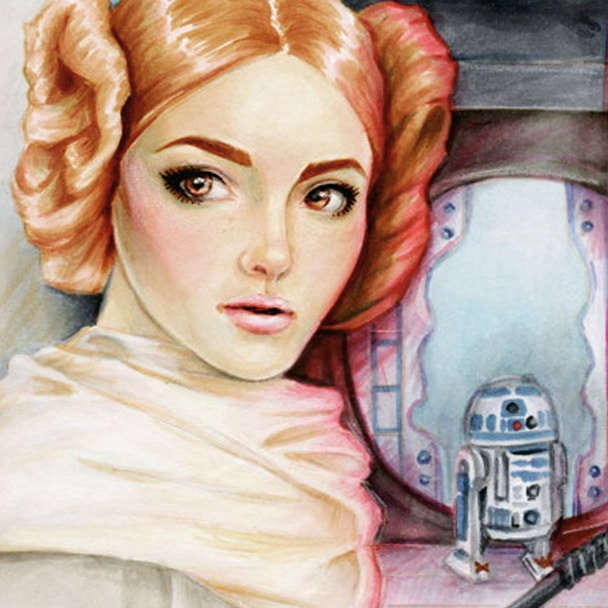When I first delved into the world of Copic Markers, it took me a while to understand the medium. Back then only Copic Classic Markers had been released. Because of this, I (luckily) only had to focus on learning how to use Copic Markers well.
A decade later, and Copic has released a whole new plethora of marker types, colours and accessories. Now artists get the opportunity to choose from a fantastic range that each sprout unique benefits.
In this article, I’ll explain the difference between Copic Sketch VS Ciao VS Classic. I’ll also showcase the Pros and Cons of each marker type and ultimately, reveal which marker you should choose based on your art style and creative profession.
Since the [Copic] Airbrush System is only compatible with Copic Classic and Copic Sketch Markers, don’t choose Ciao if you plan to use it in the future.
What Are Copic Markers?
Copics are the best artist quality markers on the market. They produce a smooth colour application and have effortless blending capabilities.
Copic Markers have an alcohol-based ink that’s acid-free and non-toxic. There are over 350 Copic marker colours that can be purchased in sets or individually.
There are three main types of Copic Markers: Copic Classic, Copic Sketch and Copic Ciao. All Copic markers are double-sided with varying nibs, depending on the type of marker you buy.
Copic Marker Nib Shapes
When deciding between Copic Sketch VS Ciao VS Classic markers, the nib shape will have a huge influence over your decision. Each one has its own set of advantages.

Super Brush Nib
Super brush nibs are the most versatile. Similar to a brush (hence the name), you can alternate between thick and thin strokes depending on the amount of pressure you apply.
Copic Sketch and Ciao Markers come with a brush tip, whereas Copic Classics do not (you can however install a brush tip on a Copic Original Marker).

Broad Nib
Copic’s broad nib is chiselled, letting you create different stroke widths with its versatile surfaces. Though not as versatile as the super brush nib (Broad Tip strokes look a lot more precise compared to the Super Brush Nibs artistic strokes) its great for laying down flat colour and creating strong shading lines (useful for anime style shading). All Copic Markers come with a broad nib end.
Keep in mind that the Broad Nib on Copic Classics are larger than their Copic Sketch and Ciao counterparts. Due to this you’ll need to be careful when buying replacement nibs. If you buy a medium-sized broad nib for your Copic Classic it’s not going to fit.

Fine Nib
Fine nibs are great for adding small detail to your work. While only Copic Classic Markers are equipped with these, you can buy fine nibs for sketch markers if you want to alternate between the fine nib and super brush.

Replacing Nibs
You can replace the nibs on your Copic Markers when they wear out by using a pair of tweezers to pull the old nib out by the base. Once you remove the nib, put in the new one using the tweezers. As soon as the new nib is in the marker, ink will start flowing through it.
Copic Sketch VS Ciao VS Classic
Copic Classic (Original)

- Comes with a Broad Nib and Fine Nib
- Available in 214 colours
- Holds the largest amount of ink
- Most customizable with interchangeable tips
Use Copic Classic When:
1. Creating Graphic Design Work
Back in the old days, Copic Markers were used by graphic designers to render rough mockups of logos, products, packaging designs and more. Therefore, these markers have been designed with Graphic Designers in mind.
Copic Classic Markers are great when you don’t like creating design work digitally, or similarly, prefer to work traditionally before moving onto a digital platform.
2. Shading Cel Animation
Creating simple hard edge shaded artwork (think anime cel shading where there is minimal gradation) is easy with Copic Classic Markers. However, that’s not to say you can’t use Copic Classic Markers to create gradients.

Before Copic Sketch Markers launched, I used Copic Classic Markers to create all kinds of gradients in my artwork before applying hard edge shading. However, keep in mind that creating these gradients will wear away the hardness of your nibs, so do it sparingly.
I’m not a huge fan of the smaller broad nibs on the Copic Sketch and Copic Ciao markers. Because of this, I use Classic Marker broad nibs when creating hard edged shadows.
In addition, the Fine Tip is great for adding small details, as well as cleaning up hard edge lines created by the broad nib (while the ink is still wet!)
Copic Sketch

- Comes with a Broad Nib and Brush Tip
- Available in 358 colours (The highest catalogue of colours)
- Hold an average amount of ink
Use Copic Sketch When:
1. Rendering Detailed Illustrations
The main reason why Copic Sketch Markers are so popular is due to their amazing brush tip. This brush is ridiculously versatile and blends seamlessly to create beautiful gradients. As a result, layering colours and creating detailed Copic Marker Art is ridiciously easy.

Because of the amazing brush tip, Copic Sketch Markers are my marker of choice. I use Copic sketch markers to create all of my detailed illustrations.
2. Creating Fashion Illustrations
As mentioned before, the brush tip on this marker makes it easy to create fabric folds. Copic Sketch also comes with a broad nib for those that prefer to use bold, rough strokes in their work, making it the most versatile marker to use for fashion illustration.
3. Producing Calligraphy and Brush Lettering Artwork
Copic Markers are great for many things. However, when it comes to calligraphy, I would recommend using quality calligraphy ink and traditional calligraphy pens for greater accuracy. However, if you’re adamant on using Copics, then Sketch Markers are best suited for this purpose.
Sketch Markers come with both Broad and Brush Tips. Because of this, you can try your hand at Brush Lettering as well traditional calligraphy wih the Broad Nib. The Brush Tip on Copic Sketch Markers are far superior to Ciao, due to their less clunky and more accurate nature. Because of this I highly recommend Copic Sketch Markers.
Copic Ciao

- The cheapest out of all the Copic Marker types
- Equipped with a Broad Nib and Brush Tip
- Available in 180 colours
- Hold the smallest amount of ink
- Does Not Support the Copic AirBrush System. Do not buy Copic Ciao’s if you plan to use the AirBrush system for your artwork.
Use Copic Ciao When You Are:
1. Starting Out
It’s always good to try a new medium out before committing to it fully. These are where Copic Ciao Markers come in. Some of the Copic Ciao Sets are great for beginners, and I particularly like this selection of colours for pale skin tone blending.
I recommend taking classes to learn how to use Copic Markers effectively. This will help you understand how the medium works. If you subsequently decide to commit to using Copics in the long term, I would suggest buying Copic Sketch or Copic Classic Markers, depending on your preference of use.
2. On A Budget
Copic Ciao Markers are great for those on a budget. They use the same fantastic Copic ink as the other markers. In additon, they’re equipped with same nibs as Copic Sketch Markers. Despite this, I feel Ciao’s Brush Nib is not as flexible when compared to the Sketch. Because of this, I use Sketch Markers for greater versatility.
While Ciao Markers have the smallest range of colours in comparison, you can always buy one of the other marker variations if you want a specific colour.
In short, Ciao Markers can still create fantastic drawings that are on par with artwork created using other marker variations. Rest assured you won’t be sacrificing the quality of your artwork if you choose these markers.
Above all, what you’ll be forgoing the most is convenience. In particular, Copic Ciao Markers have an annoying round barrel that makes you need to store them in a pen holder, or else they’ll roll off the table into your dogs awaiting mouth.
DO NOT BUY COPIC CIAO IF YOU WANT TO USE THE AIRBRUSH SYSTEM!
The Copic Airbrush System is great for when you need to cover large areas of your work with an even coverage. Since the Airbrush System is only compatible with Copic Classic and Copic Sketch Markers, don’t choose Ciao if you plan to use it in the future.
Empty Copic Wide Marker

Copic Wide Markers are primarily used to cover large areas of artwork with a consistent stroke. You can buy empty Copic Wide Markers to fill with the Copic Ink of your choosing.
Despite this, I have rarely ever used Copic Wide Markers, preferring either to use the Copic Airbrush System, or Layering Broad Nib strokes instead.
Learn How to Use Copic Markers Like a Pro
In conclusion, this Copic Sketch VS Ciao VS Classic Marker article should help you successfully choose the right marker type for your artwork.
Want to know what colours I use to create my Copic marker artworks? Check out Part Two of my Copic series: The Copic Colour System (and my personal Copic Skin Tone Selection), as well as the basics of How To Use Copic Markers.
If you’d like to discover how to use Copic Markers more effectively, check out my Learn How to Colour Online Art Course.

Hello.
I found this article extremely useful.
I intend to buy one of the 72 Copic Sketch pen sets, of which there are 3: A, B, and C.
I have not yet succeeded in printing a color chart.
Which of these would be best for general illustrating?
Is it possible to purchase a color chart?
Thank you.
Stephen
Hi Stephen,
I’m glad you’ve found my blog post helpful. Rather than buying a set, I would recommend buying colours separately based on what you will be illustrating. For example, if you will be doing a lot of portraiture or character illustrations, it would be good to stock up on skin tones that wouldn’t exclusively be in one of the three sets. I’ve written a blog post with my recommended skin tone copic marker colours, feel free to take a look: The Copic Colour Chart, and the Best Copic Colours For Skin
Copic Australia provides a free colour chart in their resources here: Copic Colour Chart PDF
If you are looking for a colour chart that accurately reflects the colour of the ink of each copic marker colour, the closest I have found is this: Complete Copic Color Chart
Let me know if there’s any other questions I can answer 🙂